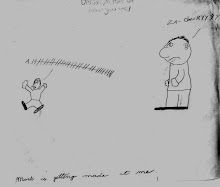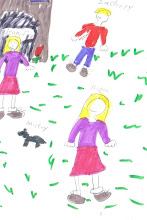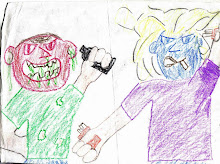TEN WAYS TO KNOW THE CUSTODY COURT SYSTEM IS BROKEN
by Barry Goldstein
Mothers and domestic violence advocates have been complaining for many years about problems in the custody court system that have resulted in large numbers of children being sent to live with abusive fathers while safe, protective mothers are denied any meaningful relationship with their children. Courts have tended to dismiss the complaints by referring to the mothers as “disgruntled litigants.” As more concern about the problem has been expressed and more research performed, the mothers’ complaints have been confirmed. Later this year (2009) a new book co-edited by Dr. Maureen T. Hannah and Barry Goldstein, DOMESTIC VIOLENCE, ABUSE and CHILD CUSTODY will be published and end any doubts that there is a pattern of mistakes made in the custody court system. These mistakes have caused thousands of cases to be mishandled and placed the lives and well being of battered women and their children in jeopardy. The book includes chapters by over 25 of the leading experts in the United States and Canada including judges, lawyers, psychiatrists, psychologists, sociologists, journalists and domestic violence advocates. Although these experts come from different disciplines and approached the issue from different directions, there is a remarkable consensus about the problem and the solution. The up-to-date research and information now available makes it clear that the present practices can no longer be justified and the custody court system must create the necessary reforms to protect the safety of children and protective mothers in domestic violence custody cases. This article will discuss ten reasons we know the custody court system is broken and must be reformed.
1. Mothers’ Complaints: The problem this article seeks to discuss are cases in which a mother who has been the primary caregiver and makes allegations of domestic violence and/or child abuse loses custody to the alleged abuser and receives supervised visitation or no contact with her children.
2. Available Research: The modern movement against domestic violence is only about thirty years old and there was little research available when it started. We now have extensive research to demonstrate common mistakes courts and the often-unqualified professionals they rely on use in domestic violence custody cases.
3. Battered Mothers Testimony Project and Research: Several states including Massachusetts, Pennsylvania, California, Arizona and New York City have done studies based on questionnaires filled out by protective mothers. These surveys have demonstrated widespread problems in the custody court system, many common mistakes and outcomes that fail to protect battered women and their children.
4. Courageous Kids: If a court system wanted to determine the validity and value of psychological evaluations, it would look for research that examined how the recommendations and approaches used by the evaluators worked out in the lives of the children. Without such research there is no way to determine if the time, money and results for evaluations are useful. In fact there is no such research and I would certainly recommend obtaining such research if evaluations were to continue to be used in child custody cases. The closest we have to such research is the Courageous Kids Network. The Courageous Kids are young adults who were forced to live with abusers by the decisions of the custody court. They are now old enough to have escaped their abusers and are speaking out about their experiences.
5. Review of Bad Cases: The authors of the 25 chapters in the book have carefully reviewed hundreds if not thousands of these cases. In their book, FROM MADNESS TO MUTINY, Dr. Amy Neustein and Michael Lesher reviewed over 1000 cases. The Truth Commission listened to the testimony of 17 women and reviewed records from their cases.
6. Parental Alienation Syndrome: PAS is a bogus theory created based on the personal biases of Dr. Richard Gardner. His books were self-published and never peer reviewed. It is used only in domestic violence custody cases to prevent or shorten investigations of the father’s abuse. PAS assumes that if a child expresses negative feelings about the father or doesn’t want visitation, the only possible explanation is that the mother alienated the child and the solution is to force the child to live with the abuser and have at most supervised visitation with the protective mother who has been the primary attachment figure for the child.
7. Gender Bias: The Truth Commission recommended that rather than training professionals with general domestic violence information, all professionals should have training in Gender Bias, Recognizing Domestic Violence and the Effects of Domestic Violence on Children. This is because they found that many of the mistakes made in these cases were caused by a lack of understanding of these basic concepts. At least 40 states and many other districts and communities have created court-sponsored gender bias committees. They have found widespread gender bias and particularly in domestic violence custody cases. Among the common problems were blaming victims for their abuser’s behavior, burdening women with higher standards of proof and giving fathers more credibility than mothers.
8. Failure to Recognize Domestic Violence: Many of the mistakes custody courts make have to do with failing to recognize domestic violence. In fairness some of the problem is caused because victims or their attorneys fail to present the necessary evidence. Unqualified professionals often discount allegations of abuse based upon information that represents a normal and reasonable response to his abuse.
9. Effect of Domestic Violence on Children: Every state has passed laws designed to promote greater consideration of the effects of domestic violence on children. Some states require domestic violence to be considered in making custody and visitation decisions and others create a presumption against custody for abusers (although often the laws or the courts require a level of proof or create other restrictions that limit the effectiveness of these laws). Prior to these laws, when a protective mother asked to limit the father’s contact with the children because of domestic violence, the judge would ask some version of “Does he also abuse the child?” If the answer was no, the court treated the father as if he was just as appropriate for custody and visitation as the mother. The change in laws was based on overwhelming research that children witnessing domestic violence were harmed as much as children directly abused.
10. Extreme Results: If a court were to give custody to a protective mother and limit the father to supervised visitation because of his domestic violence, it would be following the recommendations of up-to-date research. In other words there is a scientific basis for such an outcome. The researchers weigh the harm of restricting the children’s contact with their father and the harm the father is likely to cause with unrestricted visitation and the message sent to the children by awarding normal visitation with someone they know abused their mother. Instead what we are seeing is alleged abusers receiving custody and protective mothers having supervised or no visitation. Obviously, in these cases the courts are assuming the mother’s allegations of abuse are false. They justify the visitation restrictions by their concern the mother will continue to believe she was abused and say negative things about the father. Where is the research that the harm to the children of hearing such statements is greater than the harm of being denied a normal relationship with their mother?
Subscribe to:
Post Comments (Atom)











No comments:
Post a Comment